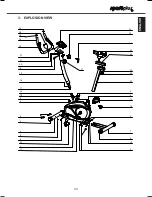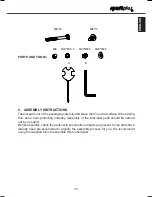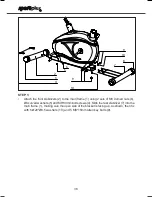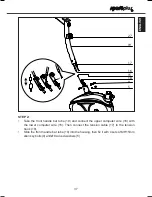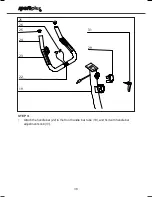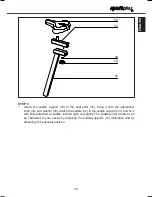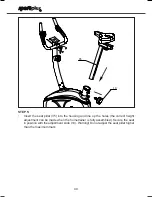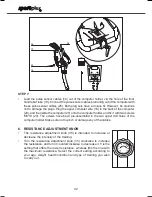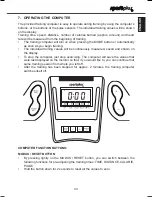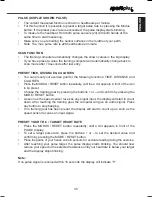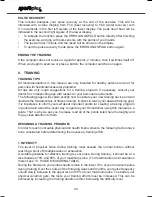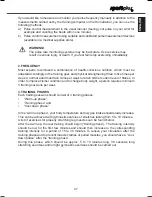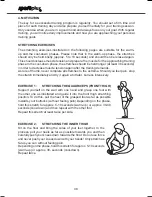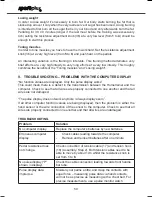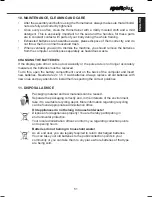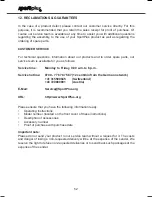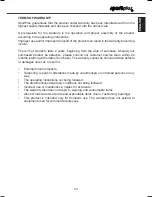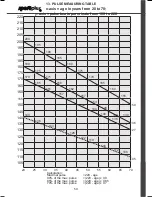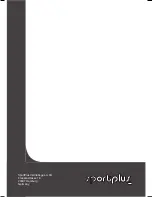
47
ENGLISH
If you would like to measure and monitor your pulse frequency manually in addition to the
measurements carried out by the training computer on the Hometrainer, you can use the
following methods:
a) Pulse control measurement in the usual manner (feeling your pulse on your wrist for
example and counting the beats within one minute).
b) Pulse control measurement using suitable and calibrated pulse measurement devices
(available in a medical supplies store).
WARNING!
The pulse rate monitoring systems may be inaccurate. Over exercise may
result in serious injury or death. If you feel faint stop exercising immediately.
2. FREQUENCY
Most experts recommend a combination of health-conscious nutrition, which must be
adapted accordingly to the training goal, and physical strengthening three to five times per
week. A normal adult must train twice per week to retain his/her current level of fitness. In
order to improve his/her condition and to change body weight, a person requires minimum
3 training sessions per week.
3. TRAINING PHASES
Each training session should consist of 3 training phases:
• “Warm-up phase”,
• “Training phase” and
• “Cool-down phase”
In the “warm-up phase”, your body temperature and oxygen intake should slowly increase.
This can be achieved with gymnastic exercise or stretches lasting from 5 to 10 minutes.
A list of exercises for properly stretching leg muscles can be found below.
After the warm-up, the real training should begin (“training phase”). The training intensity
should be low for the first few minutes and should then increase to the corresponding
training intensity for a period of 15 to 30 minutes. To relieve your circulation after the
training phase and to prevent muscle cramps or pulled muscles, you should have a “cool-
down phase” after the “training phase”.
During this phase, which should be approx. 5 to 10 minutes long, 30 seconds long
stretching exercises and/or light gymnastic exercises should be carried out.
SP-HT-2700-DE-GB-08.indb 47
6/3/2010 5:21:57 PM

